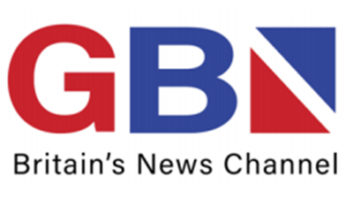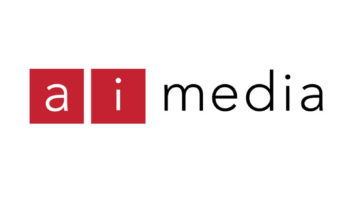When GB News launches it will be utilising what has been described as a “sophisticated multi-platform broadcast newsroom” after signing a deal with systems integrator, Mediability.
The company is owned by Fonn Group, a technology group headquartered in Media City Bergen, Norway, and with an office in New York City. The Fonn Group portfolio also includes software companies Mjoll and 7Mountains.
Mediability sells professional equipment in the Nordic countries and offers projects- and services consultants worldwide. The team was also involved in the build and launch of Australian OTT channel ausbiz last year, partly done remotely due to Covid lockdowns, as well as the launch of cloud newsroom workflows for Danish TV 2/Fyn, amongst others.
So, what’s the story relating to GB News?
“The architectural planning for GB News was carried out in the second half of 2020, installation is ongoing and on air will be Q2 this year,” explains Ole Johan L. Skogheim, chief technology officer at Mediability.
Plethora of platforms
Key to the newsroom system is DiNA, a tool that allows journalists to broadcast on several platforms at once, while automating aspects of story production that normally require whole teams.
“DiNA differs from the traditional newsroom solutions,” says Skogheim, “It is built from the ground up on modern web technologies for handling today’s challenge of news coverage across all platforms. It’s a cloud-native solution that is built with the end-users in mind, it does not require on-premise installations, extensive training and onboarding. It’s delivered as a Software-as-a-Service, which means no upgrade projects and cost, and the customer always has the latest features.”
He reports that with DiNA, the GB News staff can create news with a tool that is as easy to use as Facebook. Users can access DiNA from anywhere and can create, plan, collaborate and publish news to linear TV, to CMS systems, and to any social media platform, from one unified tool.

“DiNA is a storytelling and newsroom system that is built for today’s media houses that are ready to embrace the cloud, to use AI tools for enhancing their workflows, and to unplug legacy hardware-based solutions. And because DiNA is a cloud-native solution, it can run on any PC or Mac with an internet connection. Users access the DiNA interface from their web browser,” adds Skogheim.
Integrated with DiNA is Mimir, a cloud-based media management tool built for journalists and editors, enabling them to use AI as part of their everyday workflow. “Mimir represents a new breed of professional solutions that harnesses the power of the cloud and AI. Storytellers today require modern user interfaces with a high focus on usability and workflow. Finding relevant content from a media archive is key when it comes to creating stories and the workflow should be fast and reliable. This is what Mimir is all about!”
Skogheim explains that with Mimir, users can readily find the assets needed in a fast and secure way to create better stories. “You can automate a number of tasks using AI, and at the end optimise the time you spend to create great stories.”
Mimir harnesses the power of market-leading cognitive services from Amazon Web Services (AWS), Google, IBM, Microsoft, Speechmatics, Scriptix, Recapp, and others. It also integrates with Adobe Premiere Pro for video editing workflows. This makes all the regular Mimir functionality available for the video editor who can import clips into a project, create sub clips from text selection, and more.
“With the Adobe integration users can work with both proxy and high-res versions of their media files. With advanced search features users can find video clips or segments of video clips based on search and add assets directly into their Adobe projects.”
Skogheim goes on to illustrate one example of the workflow involving subtitles with Mimir and Adobe Premiere Pro. “When uploading a video to Mimir, the user turns on automatic speech-to-text transcription with AWS Transcribe. The speech-to-text analysis returns a transcript in, for example, Arabic that follows the English spoken words in the clip. The editor can search in the transcript in both English and Arabic. The transcript can be edited from an easy-to-use editor and work in the subtitle view for editing subtitle paragraphs and more. The project can then be imported into Adobe Premiere, including the subtitles.”
The overall workflow
And talking of workflows more generally, when the journalist creates a story from scratch or by inputting from any of the connected news feeds, the details can also be picked up from the DiNA calendar planner or from co-workers or a manager assigning a story. The journalist researches and writes the story, adding media such as images and videos from the integrated Mimir panel. At that point, a choice can be made as to what platforms the story will be published and at what time, with an option to use the built-in AI tool to suggest shortened edit of text for social media posts.
For generating rundowns, the user creates stories in the same way as for publishing to online and social media. Depending on the individual’s access level, users can submit a story for review or publish directly. The user can easily follow stories and the story status from draft, ready, planned and published. DiNA integrates with graphics systems, such as Viz Pilot Edge and automation systems, such as Viz Mosart, from Vizrt.

By using a cloud-based system, has Skogheim come across any concerns among users concerning security?
“Many of the customers that approach us have been looking to move to cloud-native solutions, to IP based workflows and to get rid of expensive legacy hardware systems for a while. There is a lot of knowledge amongst our customer base when it comes to cloud architecture, serverless infrastructure, IP and NDI based integrations. And there is a willingness to move to tools that are easier to use and that requires less maintenance. Also, with our applications being built on trusted AWS cloud infrastructure, where many of our customers run and manage their own cloud storage infrastructure, we rarely experience any reservations. The situation with the lockdowns in 2020 due to the pandemic has also speeded up broadcasters to learn about and adapt to the cloud, much faster than we anticipated.”
He continues, “We do get some questions related to GDPR (General Data Protection Regulation) and security, especially with regards to using AI technology for automatic logging of persons detected in clips and images and for saving personal data. Our tools are 100 per cent GDPR compliant and for Mimir, as example, the customers own and manage their own storage infrastructure, both for the setups with 100 per cent cloud and for hybrid-cloud setups.”

Skogheim says the customer is the owner of all its content and applications are built with read access, only. “This is an important point for reassuring the customers that they keep the control of their own assets, including all metadata. All data can safely be exported out at any time, should there be a need for this action.”
Security and Compliance is a shared responsibility between AWS and Mediability. AWS is responsible for security “of” the cloud, while Mediability is answerable for security “in” the cloud. In Mimir, permissions are used to limit access to functions so that not all users can perform all tasks. This can be useful for cost control, so that not everyone can trigger AI analysis that incur cost. It’s also useful to control workflows, where only certain users should be allowed to perform certain tasks.
Data managed by Mimir is encrypted, both in transit and at rest, using HTTPS with 256-bit encryption.
Ready access
When it comes to training, Skogheim says for Mimir, users are normally up and running the same day as given access. “We typically provide from one to three days of training for super users. Editorial staff are normally fully operational in a matter of hours. Administrators have access to monitoring payment to the integrated AI technology providers, to define metadata fields, grant access to users, and more. The customers can configure the system themselves for enabling the AI services, as example, without the need of any developer or technical resources.”
“For DiNA, the journalists usually start off with half a day to one of training, depending on their roles. The whole idea of DiNA is to be easy to use and self-explanatory. Anyone that is used to posting on Facebook, using Google docs, Word, or any other standard editing or planning tools will easily understand how DiNA works and be productive from day one.”
He concludes, “The launch of GB News is a milestone for us in Mediability, from the design and planning of their cloud-based infrastructure to the end-user tools and integrated workflows. GB News is building a news channel from the ground up on modern web-based technologies, making choices for their infrastructure and production workflows that will scale and give them a competitive edge.”







